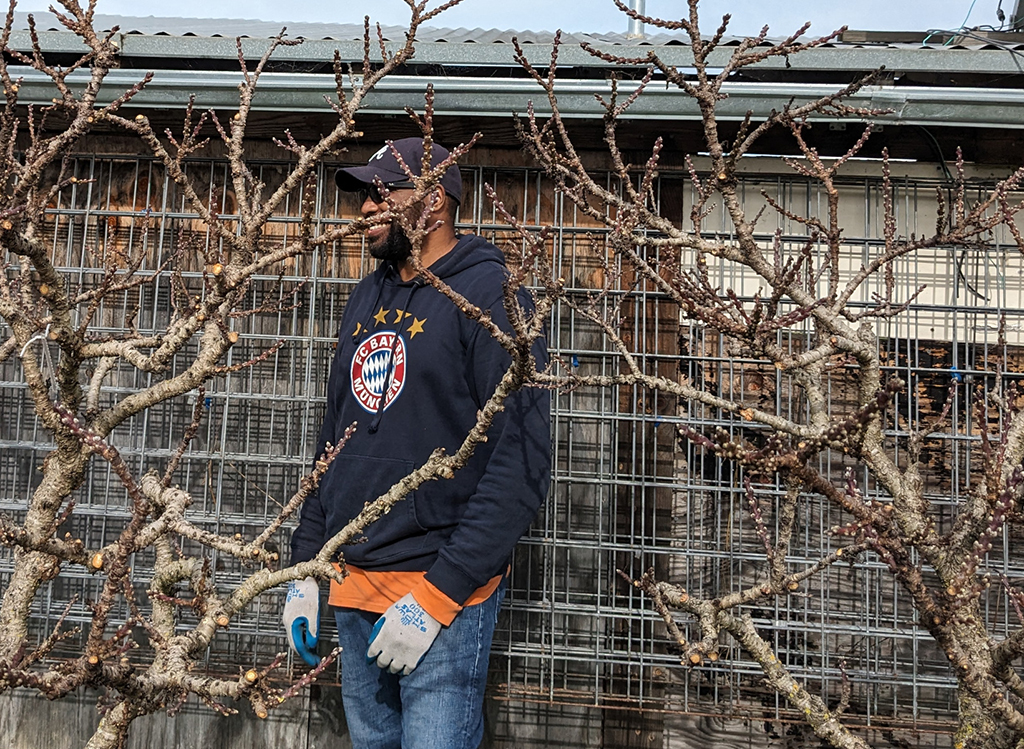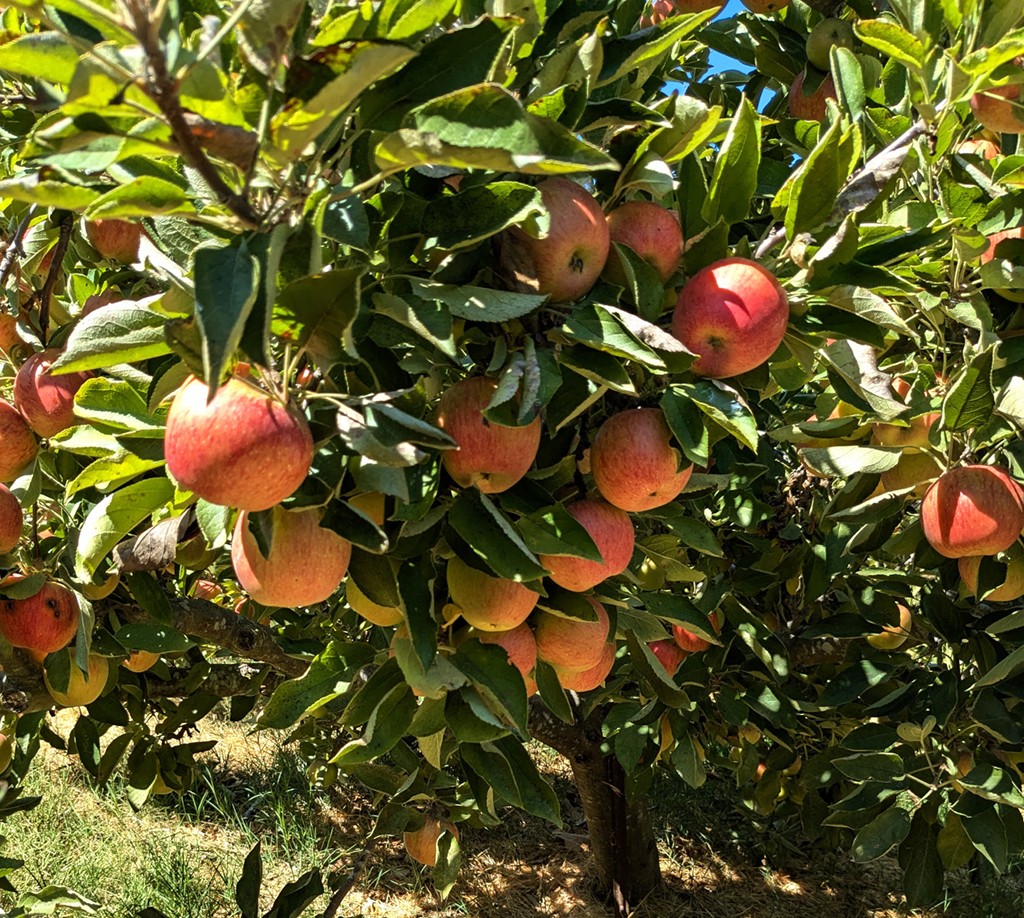by Marla Koss
- We call fertilizer “plant food” because it’s the main energy source for plants. True / False
- Companion planting allows gardeners to cut back on the use of pesticides and fertilizers. True / False
- Tomatoes and other members of the nightshade family should never be planted near Black Walnut trees. True / False
- The only way to tell unlabeled Peach and Nectarine trees apart is when there’s fruit on the tree. True / False
- When you bite into a ripe, fresh fig, chances are you’re also consuming the dead wasp that crawled in and pollinated it. True / False
- If you immediately replant a spot where a citrus, apple, peach, pear, plum, apricot or cherry tree, cane berry or rose bush has been taken out with the same thing, it will most likely fail to thrive and may even die. True / False
- Ladybugs, attracted by aphids on milkweed, will protect newly-hatched Monarch caterpillars from predators. True / False
- Blueberries thrive in the same acidic conditions as their cousins, rhododendrons and azaleas. True / False
- Early apples must be eaten soon after harvesting; late apples tend to have a better storage life. True / False
#1 False. Plant food is not the main sustenance for plants, it’s more like popping some mineral supplements for better health in addition to eating a proper dinner. Fertilizers can include macronutrients such as nitrogen, phosphorus and potassium (the NPK on plant food packages) and micronutrients like calcium, magnesium, boron, iron and zinc. Plants make their own food by capturing sunlight to make carbohydrates in the form of glucose from CO2 and H20 in the air and the soil around their roots (photosynthesis).

Plant food
#2 True. When properly arranged, companion plants can nourish each other, trap insect pests and release hormones in the soil to repel soil-borne pests.

Companion planting Borage and Russian Kale
#3 True. Talk about the opposite of a good buddy in the garden, at least where tomatoes, peppers, eggplant and potatoes are concerned! In order to protect itself from nearby plant invaders, a Black Walnut tree secretes the hormone Juglone into the soil. However, all is not lost. Beans, beets, carrots, onions, squash, cucumbers, melons and corn do just fine in the proximity of a Black Walnut tree (English Walnuts also secrete Juglone in the soil, but not as heavily as Black Walnuts do).

#4 True. Peach and Nectarine trees either need to be tagged for identification or growing a crop of fruit to tell them apart. The best tell-tale sign is whether the emerging fruitlets in spring are fuzzy (peach) or shiny (nectarine).

Bernie and dormant peach and nectarine trees
#5 False. Our backyard fig cultivars need no pollination in order to produce fruit (they are parthenocarpic). No wasp enters the heart of the Brown Turkey, White Genoa or Black Mission fig to pollinate and die there. However! Those dried figs we see in packages at the supermarket are different from the figs we enjoy fresh. These are Smyrna- and San Pedro-type figs, and must be pollinated by tiny female Blastophaga wasps, which are trapped and reabsorbed by the fig after doing their duty. “Calimyrna” figs are Smyrna-type figs grown in Southern California and are pollinated this way (no doubt you have tasted their jammy goodness in fig newtons without realizing the tragic tale of the wasp!). Take a look at this fascinating pdf from our friends at California Rare Fruit Growers (CRFG.org) to read all about figs (slides 13 – 20 tell the Caprifig/wasp story): https://crfg.org/wp-content/uploads/The-Incredible-Edible-Fig-Presentation.pdf

Violette de Bordeaux fig
#6 True. This is called “replant disease”. Say you want to replace a rose bush with a new one. Maybe the extant bush has sickened and/or is dying from old age or disease. Removing it and planting a new rose in its place can result in stunting or eventual early demise of the replacement bush, unless you replace the old soil with fresh (you may have noticed City of Alameda Public Works employees excavating old soil and putting in fresh when replanting street trees in the same spot). If, on the other hand, you don’t like where you planted that healthy young orange rose a year or two ago, and want a deep red rose there instead, you can safely make that switch. The rule of thumb is, once a healthy rose bush is 3 years in one spot, you can no longer play designer and move it around without causing issues. The exact cause of replant disease is not known, but may have to do with excreted hormones, pathogens or other harmful material that has accumulated in the root zone by the established, sickened or old bush or tree. More rules of thumb that involve the number 3: do not plant a new tree where an old one died for at least 3 years (unless you replace the soil). If you must plant a new tree right away, plant it at least 3 feet away. The soil’s carbon-to-nitrogen ratio must be balanced enough for a new sapling to go in without being inundated by too much carbon left from the old tree’s roots or a ground-up stump.

Matthew Tisdale and one of his sons digging a hole to plant a Fuji Apple tree.
#7 False. Ladybugs, they are our garden BFF’s, right? We smile when we see them going after aphids making an unholy mess on our plants. And milkweed does attract aphids. If there are enough aphids lined up on the milkweed stem to keep the ladybug happy, the freshly-hatched Monarch caterpillar may escape notice, but in general ladybugs are the predator, not the benign babysitter. Until that tiny, freshly-hatched caterpillar puts on a little more size and sucks some milkweed poison to protect itself, it’s fair game!

Monarch caterpillar
#8 True. Blueberries, rhodies and azaleas are all members of the Ericaceae family. And they all prefer a soil pH around 5.5 (cottonseed meal is a perfect soil acidifier/fertilizer).

Blueberries
#9 True. Those early-in-the-summer Gravensteins my dad used to bring me from his mini hillside orchard in Marin had to go into pies right away, or they would most likely wind up in my compost bin a week later. At least my dad said so, and he often stayed until a pie came out of the oven. On the other hand, late-harvest apples like Pink Lady, Fuji and Braeburn hold well in storage, as long as they are free of pests or other damage.

Pink Lady apples in September
